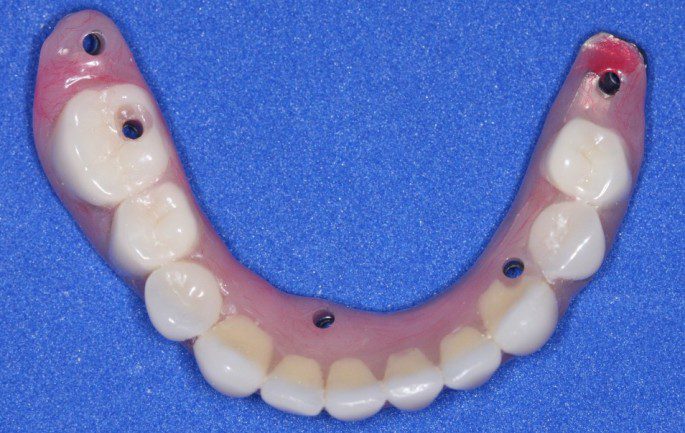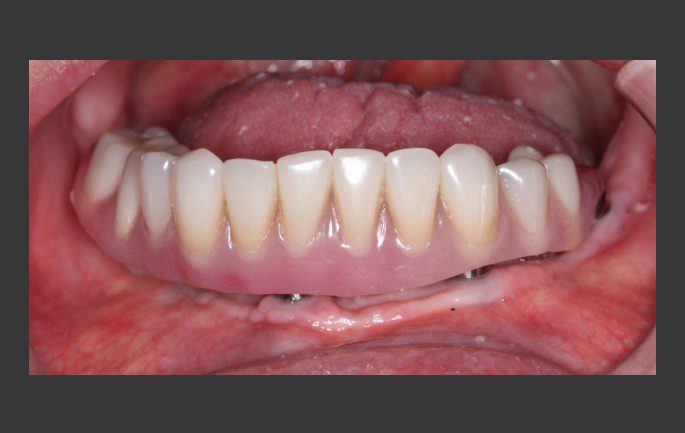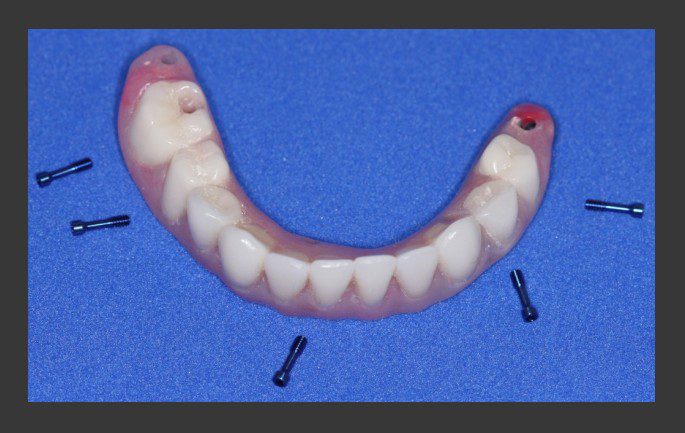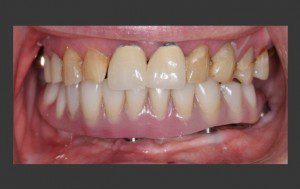
1 of 14
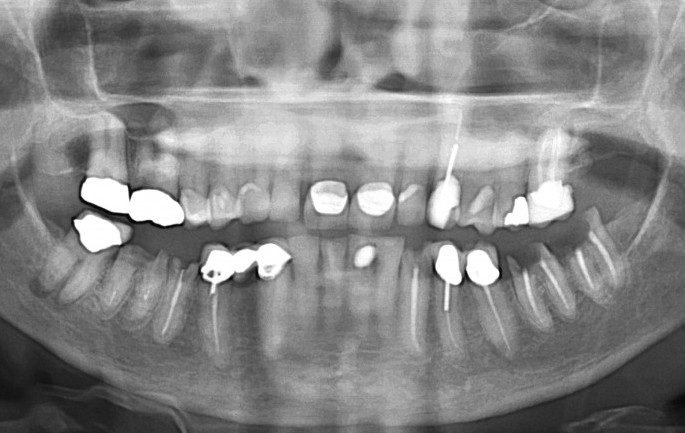
Many patients have spent a lot of time and money in the dental chair trying to keep their teeth. Whether tooth loss is caused by bad luck, bad genes or bad dentistry people are looking for long term solutions for tooth loss. Life expectancy is increasing in American, and, so is the need for long term dental solutions. This patient has spent tens of thousands of dollars trying to hang on to her teeth. Now, after many decades of success, any additional attempts to keep the teeth will most certainly be futile. Failed root canals, broken teeth, cavities and infections have doomed her remaining lower teeth.
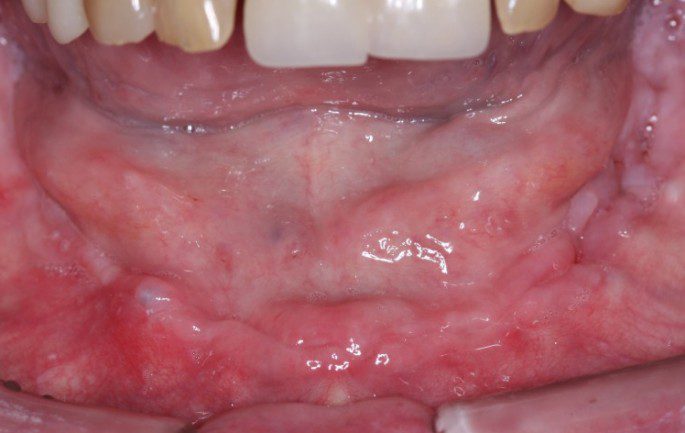
The teeth are removed and the patient wears a denture for several months. Whenever possible we attempt to give our patients immediate "fixed" temporaries. There are times when this is not possible: financial limitations, multiple areas of infection and extremely large roots can prevent us from placing implants or placing immediate fixed temporaries. Note: No one leaves the office without teeth- EVER! Temporary dentures will always be given, even if implants cannot be placed or temporized on the day of extractions.
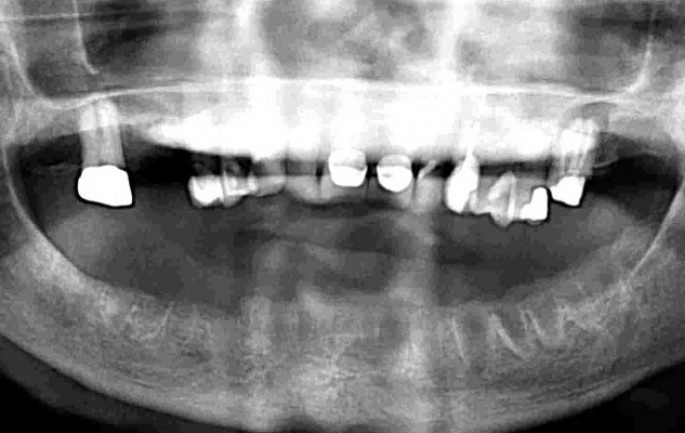
X-ray after tooth removal. The patient almost waited too long for the implants. We are down to a bare minimum of bone. Alveolar bone (the bone that holds the teeth) goes through a process of bone resorption (metabolic breakdown of bone at a cellular level) when it is not stimulated by a tooth root or a dental implant. Therefore, for many patients, the timing of implant placement after extractions should be within one year, preferably six months.
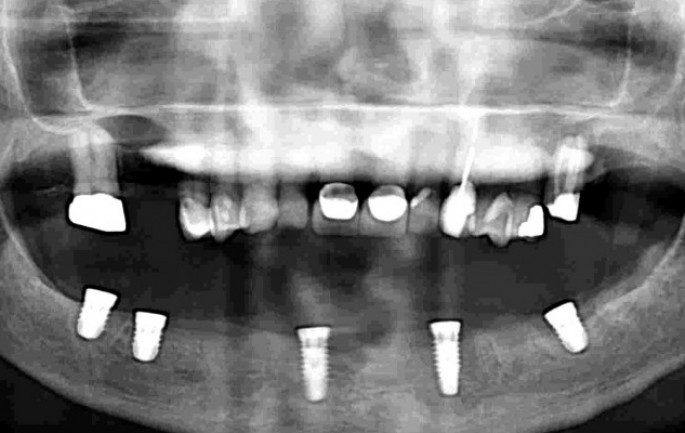
Five implants were placed. The back bone would only accommodate 6.5 millimeter implants, which is sufficient. However, there is a higher danger of nerve damage and the surgery is much more difficult for the doctor.
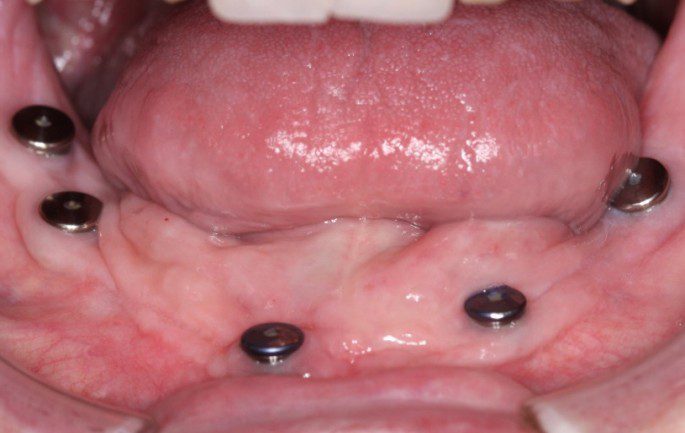
The five implants fully healed and ready for the Hybrid (All-on-4) type prosthesis. The traditional hybrid prosthesis has only used implants in the front of the jaw. The dental implant center doctors feel very strongly that the use of back implants significantly improves outcomes and reduces complications. When implants are only placed in the front of the jaws the back teeth must be completed using a cantilever (supported only on one side- like a diving board). By using back implants we can reduce or eliminate the cantilever thereby reducing the forces placed on the prosthesis and the implants.
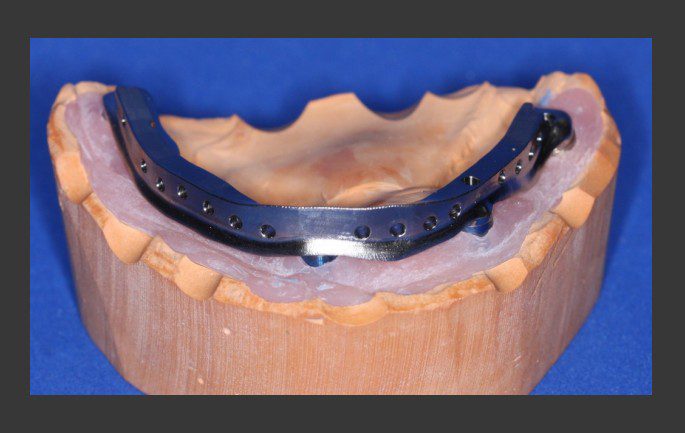
Titanium hybrid framework. This framework gives the prosthesis strength. Titanium is a very strong metal. When designed properly this framework should last a lifetime.
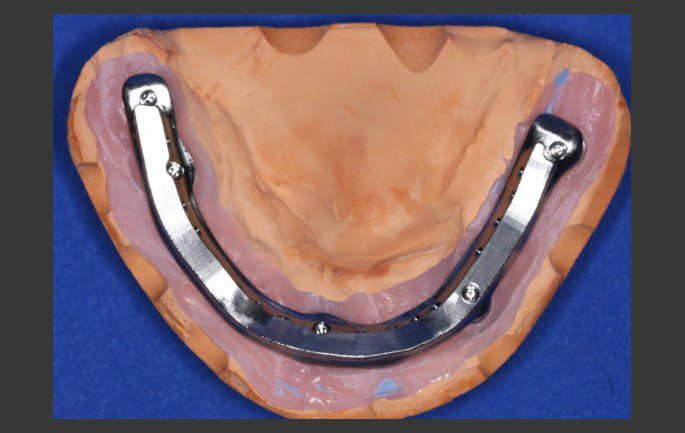
Top view of titanium framework. These frameworks are one piece and milled at a milling center out of a block of titanium.
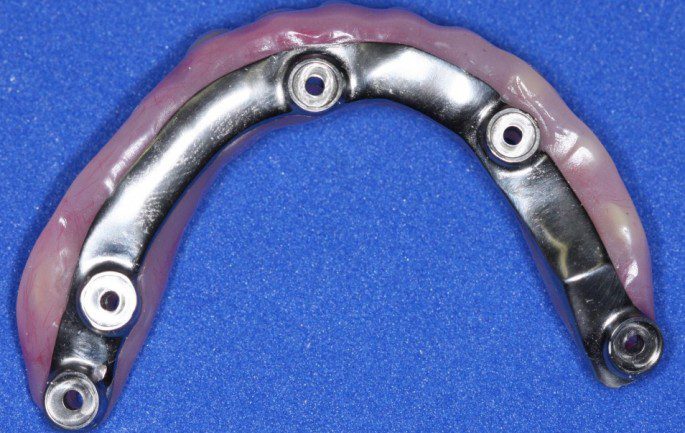
Underside of hybrid prosthesis. The cylinders fit over the implants. The Dental Implant Center doctors believe that direct connection, without an intermediate abutment, is the strongest and best connection of hybrid to implant. This idea also breaks from tradition as the majority of other implant offices believe a third layer, an intermediate abutment, is needed for the connection.
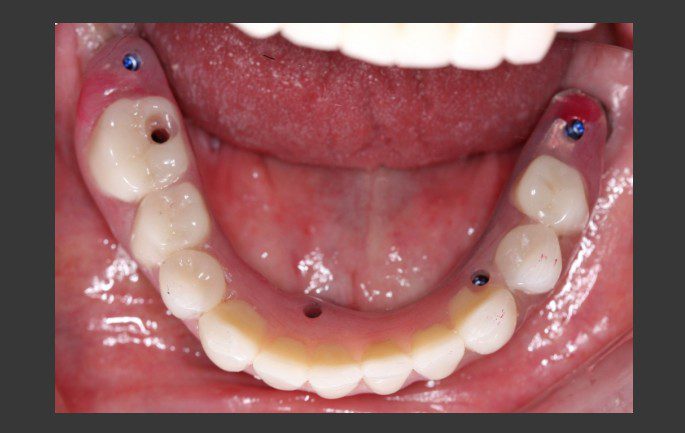
Hybrid (All-on-4) prosthesis in mouth. The screws have been tightened to the manufacturer's specifications ranging from 25 Newton-centimeters (2.2 lbs-in) to 35 Newton-centimeters (3.1 lbs-in). I highly specific dental torque wrench is used to deliver these forces to the implant screw. Many offices do not even own this torque wrench. The hole for the screws are then covered with a composite resin to keep out food and bacteria.
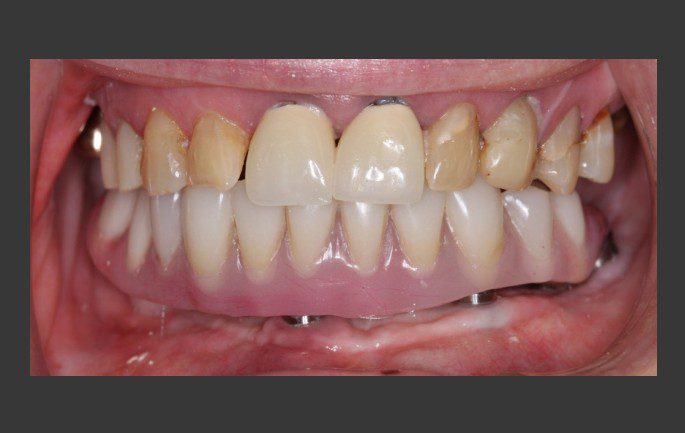
Frontal view of hybrid prosthesis with upper natural teeth. The patient plans to replace the upper teeth with implants when finances permit. In the meantime, her function, smile and confidence are restored.
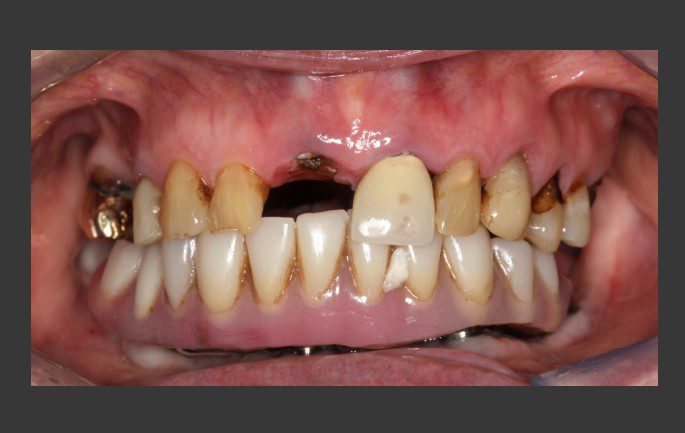
Two years later one of her upper front teeth fractures. Now, the next phase can commence. May offices, especially the corporately owned offices pressure patients to do both arches at the same time. In some cases this is indicated and in in some it is not. All patients should investigate their treatment options by way of second and third consults.

